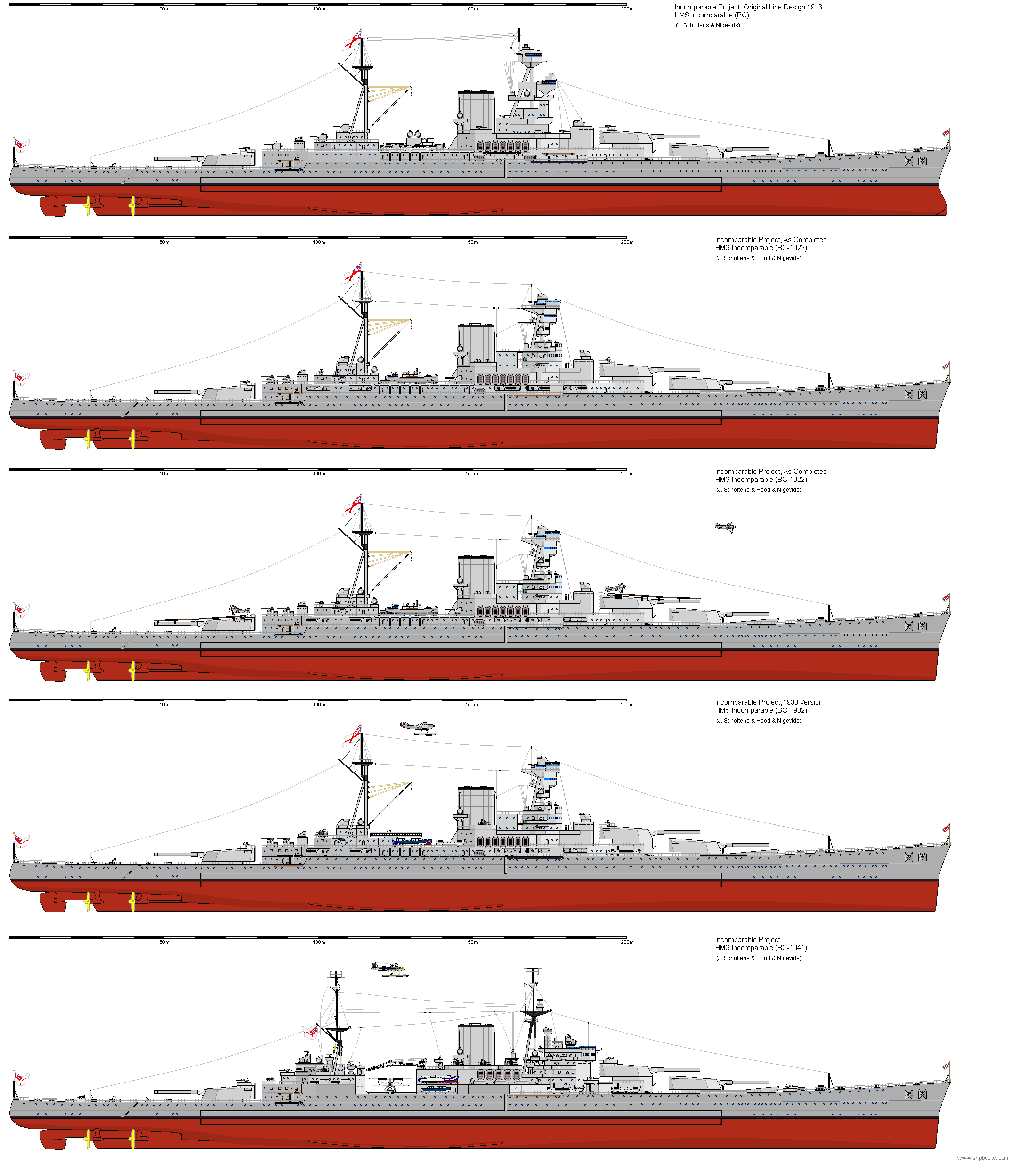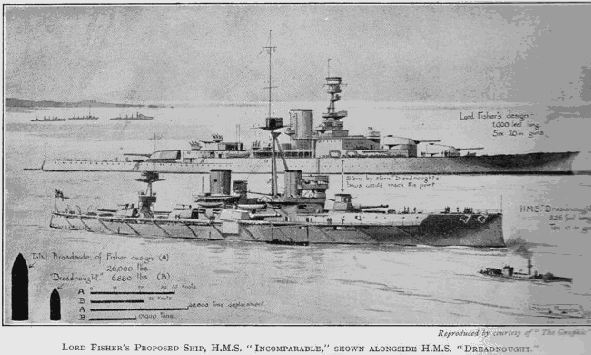History
Fisher had long been an advocate of improving technology to maintain Britain's naval superiority. At the beginning of the 20th century he had masterminded the introduction of the dreadnought type of battleship and its faster cousin, the battlecruiser. At the start of World War I, Fisher returned to the office of First Sea Lord. Here he oversaw the development of vessels which took the battlecruiser concept to its logical extreme.
Favouring an assault on the Baltic coast of Germany, three "large light cruisers" were built. These ships were designed to have a relatively shallow draft, but while they mounted large guns, they would have carried less armour than ships of the battle line. The last of these, HMS Furious, was intended to carry two 18-inch guns, far larger and more powerful than the 15-inch weapons that were standard on the Queen Elizabeth and Revenge-class battleships, and the two Renown-class battlecruisers; at the same time her deck and belt armour was at best only 3 inches thick, not really capable of standing up to the guns of even a light cruiser. These guns were actually fitted to Furious, but removed after a few months following damage to the ship when they were fired.
Design
Incomparable was suggested as the logical conclusion of this trend. By the standards of her time, she would have been a mammoth vessel. Her intended displacement of 48,000 tons dwarfed the newly built Revenge-class battleships (28,000 tons). No British battleship or battlecruiser would be built of that displacement until HMS Vanguard, which was completed after World War II.
This large hull was intended to accommodate engines capable of immense speed and sufficient fuel to give a prodigious range, coupled with armament and ammunition greater than anything before sent to sea. The 20-inch guns which were planned for Incomparable were bigger than the largest guns ever installed on a warship (the 18.1-inch guns of Yamato): 20-inch guns were ultimately only ever to be used on paper. The 18 inch gun tested on Furious was used on monitors during the war, from which complaints were occasionally voiced that it 'caused a shower of sheared off rivet heads' whenever fired. Just as remarkable as the firepower intended was the speed of the ship: if Incomparable had been capable of the 35 knots intended, she would have been faster than almost any battleship or battlecruiser built historically, and indeed faster than many cruisers or destroyers.
She was expected to have a life span of no more than 10 years; Fisher expected her design to be quickly surpassed.
As a warship, Incomparable would have been of dubious
tactical value. Her construction would have been a very great
expense, and her armour relatively weak. The Royal Navy's
experience at the Battle of Jutland in 1916, where three of
Fisher's battlecruisers were destroyed, resulted in a decisive
turn away from the 'large light cruiser' concept and towards the
'fast battleship'. The subsequent design of battlecruiser, the
Admiral class, ended up incorporating much heavier armour but
retained the proven 15-inch guns. Only one, HMS Hood, was
completed, with the rest scrapped in 1919. The following class
intended (but also never built), based on the G3 design, was a
battlecruiser only in relation to the paired N3 battleship.

